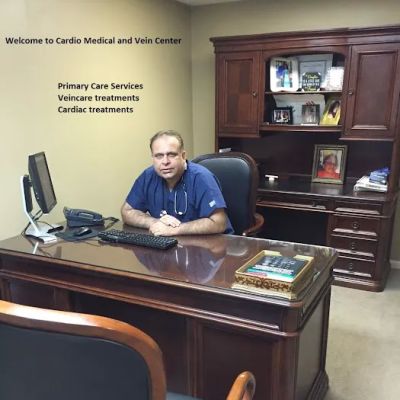Understanding the Different Types of Heart Disease: A Comprehensive Guide
- What is Heart Disease?
- Types of Heart Disease
- Risk Factors and Prevention
- Real-Life Experience with Heart Disease
- Treatment Options for Heart Disease
Heart disease is one of the leading causes of death worldwide, affecting millions of people every year. As someone who has seen the impact of heart disease firsthand in my family, I’ve come to realize just how important it is to understand the different types of heart disease. In this guide, I’ll walk you through the various forms of heart disease, their symptoms, risk factors, and treatment options, providing practical insights that will help you navigate this complex health issue.

1. What is Heart Disease?
At its core, heart disease refers to a range of conditions that affect the heart’s function. These conditions can involve the blood vessels, heart muscles, or heart valves, leading to reduced efficiency in blood circulation. While many associate heart disease with older adults, it can affect people of all ages. Understanding heart disease is crucial, as it often begins with no symptoms and can progress silently until significant damage has been done.
Heart disease includes several conditions, but the most common ones involve the narrowing or blockage of blood vessels that can lead to heart attacks or strokes. Other types include arrhythmias (irregular heartbeats), heart failure, and heart valve problems. The variety of heart disease types means that treatment plans must be tailored to the specific condition, which is why early detection and understanding the warning signs are so critical.
Atlanta Heart Specialists
atlanta heart specialists
4375 Johns Creek Pkwy #350, Suwanee, GA 30024, USA

2. Types of Heart Disease
Heart disease can be classified into several distinct types, each with its own causes, symptoms, and treatment approaches. Let’s explore the most common types of heart disease and what they entail.
2.1. Coronary Artery Disease (CAD)
Coronary artery disease is the most common form of heart disease. It occurs when the coronary arteries, which supply blood to the heart muscle, become narrowed or blocked due to the buildup of fatty deposits known as plaque. This blockage can lead to chest pain (angina) or even a heart attack. In many cases, CAD develops over time, with symptoms not appearing until the artery is significantly blocked.
2.2. Heart Failure
Heart failure doesn’t mean the heart has stopped working, but rather that it isn’t pumping blood as effectively as it should. This can occur due to a variety of conditions, including CAD, high blood pressure, or heart valve problems. The heart becomes weaker and less efficient, leading to symptoms like fatigue, shortness of breath, and fluid retention. While heart failure can be managed with medication, lifestyle changes, and in severe cases, surgery, it’s a chronic condition that requires continuous monitoring.
2.3. Arrhythmias
Arrhythmias are irregular heartbeats that can disrupt the heart’s normal rhythm. They can range from harmless palpitations to life-threatening conditions. Common arrhythmias include atrial fibrillation and ventricular tachycardia. Depending on the severity, arrhythmias may require medication, lifestyle changes, or medical procedures like cardioversion to restore normal rhythm.
2.4. Heart Valve Disease
The heart has four valves that regulate blood flow through the heart chambers. Valve problems, such as stenosis (narrowing of the valve) or regurgitation (leakage of blood through the valve), can hinder blood flow and lead to heart complications. Valve disease can be congenital (present at birth) or develop over time due to infections or age-related wear and tear. Treatment options vary, with some patients requiring valve repair or replacement surgery.
3. Risk Factors and Prevention
Understanding the risk factors for heart disease is essential for prevention. While some factors are out of our control, such as age and family history, many lifestyle choices can reduce the risk of developing heart disease. Here are some key factors to consider:
3.1. High Blood Pressure
High blood pressure, or hypertension, is a leading risk factor for heart disease. It puts additional strain on the heart and blood vessels, which can eventually lead to heart failure or stroke. Regular monitoring of blood pressure and taking steps to keep it within a healthy range is essential for heart health.
3.2. High Cholesterol
High cholesterol can contribute to the buildup of plaque in the arteries, increasing the risk of heart disease. Eating a heart-healthy diet, avoiding trans fats, and exercising regularly can help keep cholesterol levels in check.
3.3. Smoking and Excessive Alcohol Consumption
Both smoking and excessive alcohol consumption are significant contributors to heart disease. Smoking damages the blood vessels and increases the risk of CAD, while excessive alcohol can raise blood pressure and contribute to heart failure. Quitting smoking and moderating alcohol intake are two of the most effective ways to protect heart health.
3.4. Diabetes
Having diabetes increases the risk of developing heart disease, as high blood sugar levels can damage blood vessels over time. Managing diabetes through medication, a healthy diet, and regular physical activity can help reduce the risk of complications, including heart disease.
4. Real-Life Experience with Heart Disease
I’ll never forget when my close friend was diagnosed with coronary artery disease. Initially, she had no symptoms, but after a routine check-up, her doctor noticed irregularities in her blood pressure readings. It wasn’t long before further tests confirmed that she had significant blockage in one of her coronary arteries. Fortunately, because her condition was detected early, she was able to undergo angioplasty to clear the blockage and was prescribed medication to manage her condition.
This experience taught me the importance of regular check-ups and being proactive with heart health. Had my friend not been diligent about her health and scheduling routine visits, her condition could have progressed to a much more serious stage.
5. Treatment Options for Heart Disease
Treatment for heart disease depends largely on the type of condition, its severity, and the individual’s overall health. However, there are several common approaches to managing heart disease:
5.1. Lifestyle Changes
For many individuals with heart disease, making lifestyle changes can dramatically improve heart health. This includes adopting a heart-healthy diet, exercising regularly, losing weight if necessary, and managing stress levels. These changes can help control risk factors like high blood pressure, cholesterol, and diabetes.
5.2. Medication
Medications are often prescribed to manage heart disease symptoms and risk factors. Statins are commonly used to lower cholesterol, while beta-blockers and ACE inhibitors can help regulate blood pressure. For those with arrhythmias, anti-arrhythmic drugs or blood thinners may be necessary to prevent clotting and improve heart rhythm.
5.3. Surgical Interventions
In more severe cases, surgery may be required. Procedures such as coronary artery bypass grafting (CABG), heart valve repair, or even heart transplants are sometimes necessary. These surgeries are typically reserved for individuals whose conditions are not responsive to medication or lifestyle changes alone.
Heart disease is a serious condition, but with the right knowledge and proactive care, it can be managed. Whether it’s through lifestyle changes, medication, or surgical intervention, the earlier you catch and treat heart disease, the better your chances of leading a healthy life.
If you're looking for more information or guidance on managing heart disease, explore resources on HeartCare Hub, where you can find expert recommendations and advice tailored to your specific needs.





















Deborah Heart and Lung Center
deborah heart and lung center
200 Trenton Rd, Browns Mills, NJ 08015, USA